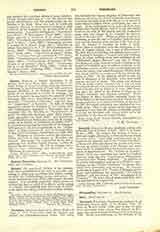

Cornillon, Abbey of, founded by Albero, Bishop of Liege, in 1124, three years after St. Norbert had formed the Premonstrateusian Order. The abbey was intended for Canons Regular of Premontre who had been sent from the Abbey of Floreffe near Namur; it stood on the right bank of the Meuse on an elevation called Mont Cornillon which overlooked the city of Liege. In the early years of the order all Norbertine abbeys were double abbeys, that is to say, the canons lived on one side of the church and the Norbertine nuns, who had charge of the hospital for women, dwelt on the other side. Where an abbey stood on an elevation, as was the case at Cornillon, both the nunnery and the hospital were erected at the foot of the hill. St. Juliana of Cornillon (b. 1193; d. 1258), whose name is connected with the institution of the feast of Corpus Christi, was a nun of this convent. The first abbot of Cornillon was Blessed Lucas, one of St. Norbert’s disciples, a learned and holy religious, some of whose writings have been published in the “Bibliotheca Magna Patrum”, and also by Migne. The Bishop of Liege, wishing to build a fortress on the heights of Cornillon, gave in 1288, in exchange to the Norbertine canons, another place in his episcopal city where the abbey, now called Beaurepart (Bellus Reditus), stood until it was suppressed by the French republic in 1796. All the religious refused to take the oath of allegiance to the Republic; some were exiled and one was put to death. The abbey was declared to be of public utility, consequently it was not sold; for a time it served as an arsenal and for other government purposes, but by decree of June 11, 1809, Napoleon gave the abbey to the Bishop of Liege, as the bishop’s residence and diocesan seminary. Where the Abbey of Mont Cornillon originally stood the Little Sisters of the Poor have erected a home for old people, and close to the home, but below, at the foot of the hill, the former convent is now inhabited by Carmelite nuns. Part of the church of the nuns has remained as it was when St. Juliana of Cornillon prayed in it and was favored with visions which led to the institution of the feast of Corpus Christi.
F. M. GEUDENS

